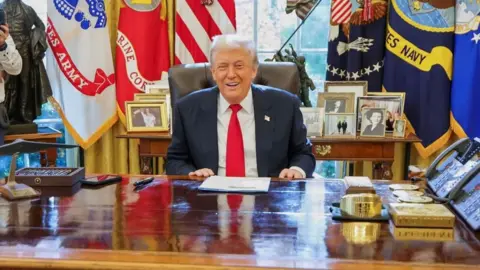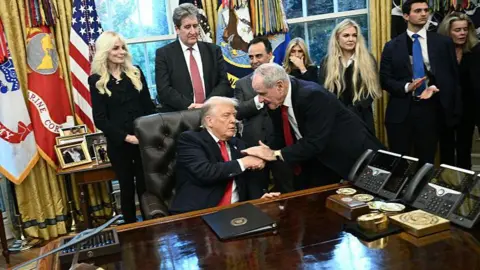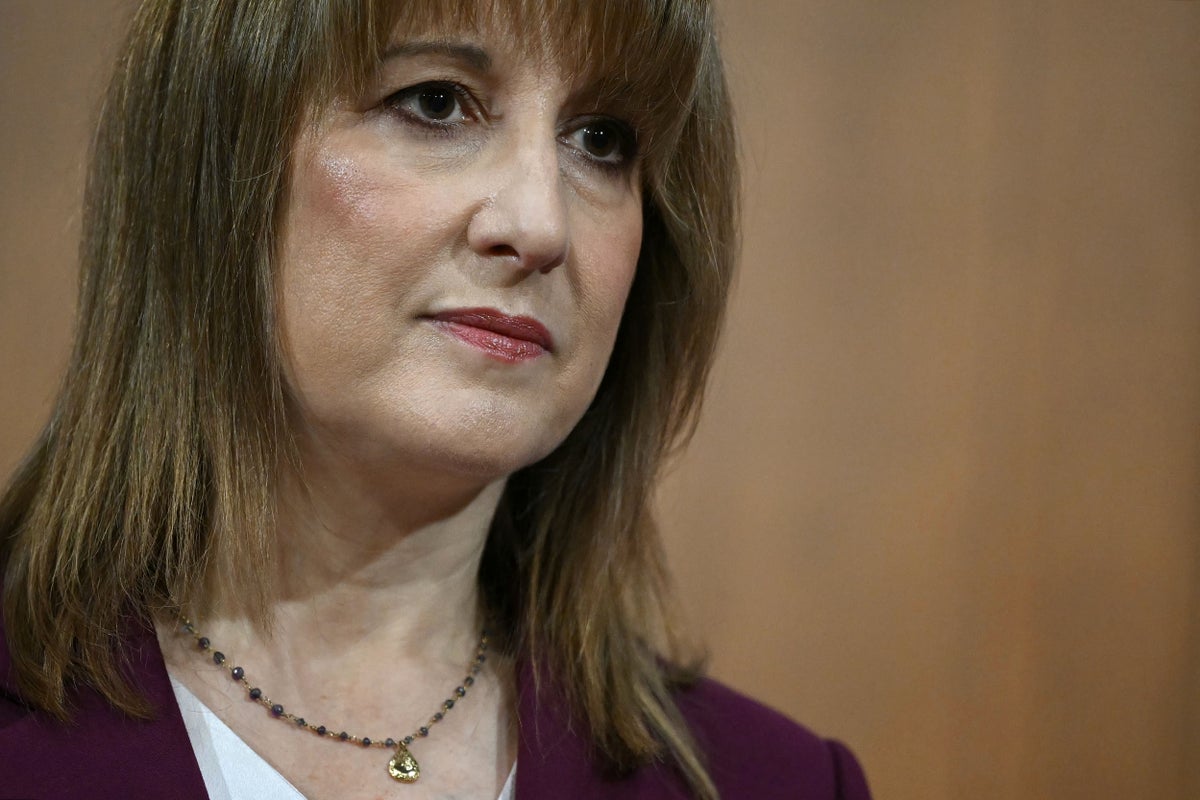Business
The Old Playbook Is Broken: A Dynamic Strategy For Retirement

Last Updated:
India’s seniors like Rajesh and Priya are redefining retirement with active lifestyles. Discover why dynamic financial planning is essential for longer lives.

Investment
Let me tell you about two of the people I worked with (names changed for privacy). Rajesh, 62, just launched his third startup after “retiring” from his corporate career. And Priya, 58, is meticulously planning her dream solo Euro-trip now that her children have settled abroad.
Five years ago, I would have called them outliers. Today, they represent the new reality of India’s seniors – healthier, wealthier, and seeking dramatically more out of life than any previous generation.
However, when I review the financial plans of people in their 50s and beyond, I see the same outdated frameworks we’ve been using for decades. I see them still using the ancient playbook of calculating a retirement corpus at 50, parking it in “safe” fixed deposits, and hoping the FDs would outlast them.
But, here’s the uncomfortable truth I’ve learned: Life expectancy in India has jumped from 54 years in 1990 to over 70 years today. Many of the people I worked with, who are already in their 50s, will live 30+ years after turning 60, and that’s longer than their entire careers.
This isn’t just outdated thinking. It’s financially flawed.
Why I Stopped Recommending “One-Time”
Retirement Planning
After working with hundreds of people across ages and different market cycles, I’ve seen the same pattern repeat: the people who struggle aren’t those who saved too little – they’re the ones who planned once and never adapted.
Traditional retirement planning was designed for work until age 60, receiving a pension, and living quietly for 10-15 years. Simple. Predictable. Over.
Today’s retirement is a different ballgame.
Here’s what I tell every client: “We prepare in phases for everything – your child’s education, your career progression, even buying a home. But retirement? We still treat it like a one-day event rather than a three-decade journey.”
The Four Flaws I See in Every Traditional Plan
In my 30+ years of experience, I’ve identified four critical mistakes that render most retirement plans obsolete:
Flaw #1: The “Retirement = Inactivity” Assumption
The biggest misconception I encounter is that retirement means withdrawal from life. 60-year-olds today have the health and ambition that 45-year-olds had a generation ago. They’re launching businesses, learning digital skills, and relocating to their dream cities.
Their parents retired to rest. They’re retiring to reset.
Flaw #2: Ignoring the New Retirement Aspirations
When I started my career, retirement planning meant calculating basic living expenses plus medical costs.
Now? People I know want budgets for:
● Extensive domestic and international travel
● Premium healthcare and wellness programs
● Lifelong learning and skill development
● Second careers and entrepreneurial ventures
These aren’t luxuries but the new baseline expectations.
Flaw #3: The “Save and Forget” Mentality
Here’s what I’ve learned from managing portfolios through multiple market cycles: The biggest risk isn’t market volatility, it’s outliving your money.
Most plans obsess over accumulating a corpus but completely ignore the challenge of making that money last and grow over 30+ years. With inflation consistently eroding purchasing power, a static approach guarantees declining living standards.
Flaw #4: One-Size-Fits-All Planning
This one particularly troubles me. Take women, for example. They live 2-3 years longer than men but typically have 20-30% lower lifetime earnings. Yet I see the same planning templates applied to everyone.
The result? I’ve counselled too many women who’ve outlived both their spouses and their money.
My Framework: The Dynamic Retirement Strategy
After years of seeing static plans fail, I’ve developed what I call the “Dynamic Retirement Strategy.” Here are the core principles I now advocate:
Principle #1: Plan for 100, Not 75
Medical advances are accelerating. The 60-year-old sitting in an office today may need their money to last 40 more years. This single mindset shift changes everything: how much to save, how to invest, how to structure withdrawals.
Principle #2: The 5-Year Review Rule
I now insist everyone I work with to review and revise their plans every 5-7 years. Life changes. Health evolves. The family needs shifts. Markets move.
Your financial plan must be a living document, not a museum piece.
There’s a gentleman who had initially planned for a quiet retirement in his hometown, but at 65, decided to relocate to Goa and start a restaurant. His original plan would have been disastrous. The revised plan? He’s happier than he was in his corporate role.
Principle #3: Growth Investing Doesn’t End at 60
Pure debt instruments, our industry’s default recommendation for retirees, simply won’t cut it for longer lifespans and the changing world order.
I now recommend balanced portfolios with equity exposure even for people who are in their late 60s. Yes, there’s volatility. But the alternative, guaranteed purchasing power erosion, is worse.
Principle #4: Plan for Lifestyle changes and Inflation, not Just Medical costs
Everyone plans for rising healthcare costs. Few plan for rising lifestyle expectations. The retirement budget that feels adequate at 60 often feels constraining at 70.
Today, people don’t want to downgrade their lives in retirement. They want to upgrade them. The financial plan must account for this reality.
Principle #5: Women Need a Different Strategy
Based on my experience, women need:
● More aggressive saving during working years
● Different asset allocation approaches
● Higher corpus targets to account for longevity
It’s not complicated. It’s just different.
Principle #6: Multiple Income Streams Are Essential
I do not recommend relying solely on fixed deposits and pensions. In my most successful cases, people have diversified income streams: rental properties, dividend stocks, part-time consulting, and even small business ventures.
One client generates more income from his post-retirement photography business than his previous corporate salary. Another earns steady rental income from properties she bought strategically during her working years.
The Industry Must Catch Up
The generation entering retirement today doesn’t want to rest; they want to redesign. Are we equipped to help them?
We need:
● Products designed for 30-year retirement journeys, not 10-year wind-downs
● Planning tools that adapt to changing circumstances
● Investment options that balance growth with stability over extended
periods
● Specialised approaches for different demographics and life situations
The transformation is already beginning. Progressive advisors are moving from “corpus calculations” to comprehensive “strategy frameworks.” But we need to move faster.
What You Should Do Right Now
If you’re reading this and approaching or already in retirement, here’s my advice:
Immediate Actions:
1. Audit your current plan: When was it last updated? Does it assume you’ll live to 85 or 95?
2. Stress-test your assumptions: What if inflation averages 6% instead of 4%? What if you need care for 10 years instead of 5?
3. Diversify beyond traditional options: Are you too dependent on fixed deposits?
Consider working with advisors who understand modern retirement realities. Look for those who talk about “retirement strategies” rather than just
“retirement corpus.”
The Bottom Line
After 30+ years in this industry, I can say with certainty: Your parents’ retirement strategy won’t work for your retirement reality.
The old playbook of “work, save, retire, rest” is obsolete. The new playbook, “work, save, retire, redesign, adapt, thrive”, requires dynamic thinking and flexible planning.
I’ve seen too many retirees struggle not because they didn’t save enough, but because they planned once and never adapted. Don’t let that be your story.
The demographic transformation is creating both unprecedented challenges and remarkable opportunities. The people I work with today are living longer, more active, more fulfilling lives than any previous generation.
But only if their financial plans keep up.
The shift from static corpus to dynamic strategy isn’t coming. It’s already here.
The question is whether you’ll adapt fast enough to make the most of these additional decades of life.
Because trust me, they can be the best decades yet.

Varun Yadav is a Sub Editor at News18 Business Digital. He writes articles on markets, personal finance, technology, and more. He completed his post-graduation diploma in English Journalism from the Indian Inst…Read More
Varun Yadav is a Sub Editor at News18 Business Digital. He writes articles on markets, personal finance, technology, and more. He completed his post-graduation diploma in English Journalism from the Indian Inst… Read More
September 28, 2025, 10:54 IST
Read More
Business
US agrees deal to slash Swiss tariffs to 15% after golden charm offensive

 AP
APPaul KirbyEurope digital editor
Switzerland and the US have agreed to cut President Donald Trump’s steep 39% tariffs on Swiss exports to 15%, as part of a deal that involves a Swiss promise to invest $200bn (£150bn) in the US.
“It’s a great relief for our economy,” said Swiss Economics Minister Guy Parmelin, who said significant damage had been done since the additional tariffs had kicked in last August.
Parmelin said a move by Swiss business leaders to meet Trump in the White House last week had proved “decisive” in reaching a deal.
Industry chiefs visited the Oval Office, bearing gifts including a Rolex gold watch and a specially engraved gold bar from Swiss-based gold refining company MKS.
Initial attempts by Swiss President Karin Keller Sutter to change Trump’s mind had fallen on deaf ears. Trump said she “was a nice woman, but she did not want to listen”.
But after the 4 November encounter with Swiss business leaders, Trump revealed this week a deal was being worked on.
US Trade Representative Jamieson Greer confirmed an agreement had been reached, saying “President Trump’s unmatched dealmaking continues to deliver for the American people”.
The deal had involved very hard work, said chief trade negotiator Helene Budliger Artieda. Guy Parmelin said it would bring Switzerland into line with the 15% tariff rate negotiated with the US by its European Union neighbours.
The economics minister said it involved the Swiss economy investing $200bn directly in the US by 2028. A third of that Swiss money will be invested in the US in 2026 under the deal.
Switzerland has also agreed to axe tariffs on a quota of US meat exports including beef, bison and poultry.
Greer said the deal “tears down longstanding trade barriers” and Swiss investment would bring thousands of new jobs.
For Swiss industry, the deal could not come soon enough. Tech exports to the US are down 14.2% on the third quarter of last year, according to latest statistics – a dramatic fall since the tariff hike was imposed in August.
The role of Swiss industrialists appears to have been key, and some particularly those trading in luxury goods, gold, or commodities, already had contacts in Trump’s circle.
In September, Trump appeared at the US Open tennis final in the Rolex VIP box hosted by the Swiss watch company’s chief executive Jean Frédéric Dufour.
 MANDEL NGAN/AFP
MANDEL NGAN/AFPThe president even asked if the Rolex CEO would have been there if Trump had not slapped such steep tariffs on Switzerland.
Last week Dufour met Trump again, this time in the Oval Office, along with fellow business leaders including Johann Rupert from luxury goods maker Richemont and Marwan Shakarchi from MKS.
Days after the meeting, Trump was pictured in the Oval Office with what looked very much like a Rolex “Datejust” desk clock, produced by the company as a collector’s item, and worth tens of thousands of dollars.
A White House official has confirmed to the BBC the two items were given to Trump.
It is quite normal nowadays for visitors to the Oval Office to come bearing a gift.
UK Prime Minister Sir Keir Starmer brought an invitation from King Charles for a lavish state visit. German Chancellor Friedrich Merz offered a framed copy of the birth certificate of Trump’s German grandfather.
 BRENDAN SMIALOWSKI/AFP
BRENDAN SMIALOWSKI/AFPThe US president receives thousands of gifts every year and they then become US property, deposited with the National Archives and filed annually by the state department.
They are eventually transferred to a presidential library. Some gifts can be kept but presidents have to pay federal taxes if they do not come from a close relative.
Swiss industry has been waiting for a deal with bated breath and a number of Swiss companies had warned they would have to furlough staff if nothing changed.
Yves Bugmann, who heads the Swiss Watch Industry Federation, welcomed the deal after months of uncertainty.
Asked what kind of investment the Swiss government might make in the US that would add up to $200bn, Helene Budliger Artieda said there was a detailed list that included pharmaceuticals, but she singled out plans for plane manufacturer Pilatus to build a big US plant and train-maker Stadler to expand its US operations in Utah.
Gold refining is also part of the plan.
“Currently, Switzerland is the primary location for gold storage, and New York is the primary location for trading,” said trade negotiator.
The chief trade negotiator said it would take a few days or even weeks for the changes to come into effect.
The agreement will only become binding when it receives approval from the Swiss parliament, and then it will be put to a referendum.
Business
Stocks hit and bond yields jump amid tax U-turn talk

Stocks fell and bond yields spiked in volatile trading on Friday amid uncertainty over UK Budget proposals after an apparent U-turn on tax policy by Chancellor Rachel Reeves.
The FTSE 100 Index closed down 109.31 points, 1.1%, at 9,698.37. It had earlier traded as low as 9,610.45.
The FTSE 250 ended 175.95 points lower, 0.8%, at 21,819.56, and the AIM All-Share slid 8.95 points, 1.2%, at 746.51.
For the week, the FTSE 100 was up 0.2%, as was the FTSE 250, while the AIM All-Share fell 0.7%.
Market volatility came after the Financial Times reported Ms Reeves had ditched plans to raise income tax to help fill an expected fiscal deficit.
The Treasury signalled the change came because of more positive fiscal forecasts from the Office for Budget Responsibility, although Ms Reeves has also faced a concerted pushback from Labour MPs opposing the move.
“The Chancellor will deliver a fair Budget,” the Prime Minister’s spokesman told political reporters at the daily lobby briefing.
“The Chancellor has been very clear on the need to deliver stability in the public finances. She wants to give companies the confidence to invest,” the spokesman added.
But the spokesman refused to be drawn on “speculation” on the reported decision not to raise income tax.
Kallum Pickering, at Peel Hunt, said if Ms Reeves stays clear of raising income tax rates or lowering the thresholds at which they are paid, her remaining option would be likely to be to opt for a haphazard patchwork of smaller anti-growth tax increases.
“That would be a bad outcome. It would add to uncertainty, further damage the Government’s already tarnished credibility, and complicate any (Bank of England) judgment to potentially offset tax rises with rate cuts,” he said.
More positively, Goldman Sachs said if reports prove correct, it probably suggests that the fiscal deterioration is slightly less severe than initially assumed.
The broker now pencils in a total fiscal consolidation of £25 billion in the Budget later this month versus £30 billion previously, requiring gross tax increases of £30 billion versus £35 billion previously.
The uncertainty sparked an upward move in bond yields, which move inversely to prices.
The yield on the UK 10-year gilt rose to 4.57% from 4.44% on Thursday, while the 30-year yield jumped to 5.39% from 5.23%. Both have fallen sharply in recent weeks as hopes rise of lower interest rates.
Sterling was quoted at 1.3158 dollars at the time of the London equities close on Friday, lower compared with 1.3197 dollars on Thursday.
The euro stood at 1.1617 dollars, lower against 1.1644 dollars. Against the yen, the dollar was trading higher at 154.58 yen, compared with 154.31 yen.
In European equities on Friday, the CAC 40 in Paris closed down 0.8%, while the DAX 40 in Frankfurt fell 0.7%.
In New York, the Dow Jones Industrial Average was down 0.3% at around the time of the London close. The S&P 500 index was 0.4% higher, while the Nasdaq Composite rallied 0.6%.
All three major US indices fell heavily on Thursday amid tech weakness and growing doubts that the Federal Reserve will cut interest rates in December.
The yield on the US 10-year Treasury was at 4.13%, stretched from 4.11% on Thursday. The yield on the US 30-year Treasury was quoted at 4.73%, widened from 4.69%.
Federal Reserve Bank of Minneapolis president Neel Kashkari said he did not support the US central bank’s last interest rate cut, though he is still undecided on the best course of action for its December policy meeting.
“The anecdotal evidence and the data we got just implied to me underlying resilience in economic activity, more than I had expected,” Mr Kashkari said in an interview with Bloomberg News. That, he said, argued for a pause to rate cuts at the Fed’s October meeting.
Back in London, a handful of stocks were in the green on the FTSE 100, with DCC, up 1.7%, leading the way.
Gold miners Endeavour Mining and Fresnillo were prominent fallers, down 2.9% and 1.7% respectively, as the gold price fell.
Gold traded sharply lower at 4,101.80 dollars an ounce on Friday against 4,206.40 dollars on Thursday.
Bookmaker Entain slumped 3.7%, with a hike in gambling taxes thought to be high on the list of likely Budget rises. William Hill owner Evoke fell 4.3%.
Banks weakened on fears the Budget uncertainty will knock economic growth, with Barclays off 3.2%, Lloyds down 2.8% and NatWest down 3.6%.
Land Securities fell 5.3%, with market uncertainty taking the shine off first-half results.
The London-based commercial property development and investment company said it continued to see “clear positive momentum across every part of our business” as it raised its interim dividend to 19p per share, up 2.2% from 18.6p a year ago.
In addition, Land Securities raised its like-for-like net rental income guidance for its current financial year ending March 31 to between 4% and 5%, up from its previous guidance between 3% and 4%.
Melrose Industries closed down 1.2% despite a positive trading update.
The Birmingham-based aerospace manufacturing company said group revenue grew by 14% in the four months to October 31, with Engines up 28%, driven by a strong performance in both original equipment and the aftermarket, and Structures up 5%.
Adjusted operating profit was significantly higher than the comparative period and in line with expectations, the firm said.
Brent oil was quoted higher at 64.57 dollars a barrel at the time of the London equities close on Friday, from 63.14 dollars late on Thursday.
The biggest risers on the FTSE 100 were DCC up 82 pence at 5,020p, WPP, up 1.8p at 288.3p, Burberry Group, up 4p at 1,232p, AstraZeneca, up 38p at 13,532p and Rentokil Initial, up 1.1p at 403.6p.
The biggest fallers on the FTSE 100 were Land Securities, down 34p at 613p, Kingfisher, down 12.4p at 295.6p, Entain, down 27p at 700.4p, NatWest, down 22.4p at 600.8p and Barclays, down 13.75p at 413.5p.
Monday’s global economic calendar has Canadian CPI data, Japan GDP and industrial production figures, and the New York empire state manufacturing index.
Monday’s UK corporate calendar has half-year results from storage company Big Yellow Group.
Later in the week results are due from tobacco company Imperial Brands along with a third-quarter trading update from sports clothing and footwear retailer JD Sports Fashion.
Contributed by Alliance News
Business
Trade push: India seeks faster Russian clearances as both sides target $100 bn by 2030; pharma and marine approvals on priority – The Times of India

India has asked Russia to fast-track approvals for Indian exporters –including expedited listing of domestic establishments and quicker registration of marine and pharmaceutical products — as part of a broader push to expand two-way trade, the commerce ministry said on Thursday.Commerce secretary Rajesh Agrawal, currently in Moscow, stressed the need for “confidence-building measures to unlock market access” during discussions with Russian officials at the 26th Meeting of the India-Russia Working Group on Trade and Economic Cooperation, reported ET.“The issues included expedited listing of Indian establishments and a systems-based approach with FSVPS in agriculture, especially marine products and a time-bound pathway in pharmaceuticals covering registration, regulatory reliance and predictable timelines,” the official statement said, quoted ET. FSVPS is Russia’s Federal Service for Veterinary and Phytosanitary Supervision.Agrawal and Russian deputy minister of economic development Vladimir Ilyichev finalised and signed a forward-looking protocol covering multiple sectors aimed at strengthening economic ties. Bilateral trade currently stands at $25 billion, with both sides committed to raising it to $100 billion by 2030.The working group identified opportunities across engineering goods, chemicals and plastics, electronics, pharmaceuticals, agriculture, leather and textiles. It also mapped areas where Indian strengths –including smartphones, motor vehicles, gems and jewellery, organic chemicals, textiles and leather — can support Russia’s trade diversification and de-risking strategy.In services, India encouraged Russian entities to increase procurement of Indian IT-BPM, healthcare, education and creative services. It also pushed for predictable mobility for Indian professionals amid growing labour shortages in Russia.India highlighted its global capability centre (GCC) ecosystem — over 1,700 centres employing nearly 1.9 million professionals — as a ready platform for Russian firms to enhance business continuity, cybersecurity, design, analytics and shared-services support, bolstering supply-chain resilience.The Indian side acknowledged Russia’s interest in concluding a bilateral investment treaty. Both countries also agreed to “explore payments solutions to meet the needs for businesses, especially medium, small and micro enterprises,” the ministry said.The engagement comes ahead of intensified bilateral activity, with Russian President Vladimir Putin scheduled to visit India on December 5 for the Russia-India Forum.
-

 Entertainment6 days ago
Entertainment6 days agoChina unveils£5.4 bn Fujian, its most advanced aircraft carrier yet
-

 Fashion1 week ago
Fashion1 week agoBangladesh Bank allows foreign currency-taka swap facility for dealers
-

 Tech1 week ago
Tech1 week agoThe AI Data Center Boom Is Warping the US Economy
-

 Politics6 days ago
Politics6 days agoIDF lawyers warned of possible Gaza war crimes: US intel findings
-

 Business1 week ago
Business1 week agoBudget tax hikes could see food prices soar, major supermarket boss warns
-

 Entertainment7 days ago
Entertainment7 days agoRobert Pattinson jokes about competing with Gen Z
-

 Tech1 week ago
Tech1 week agoWhy fears of a trillion-dollar AI bubble are growing
-

 Tech1 week ago
Tech1 week agoNature’s resilience inspires an improved power grid








